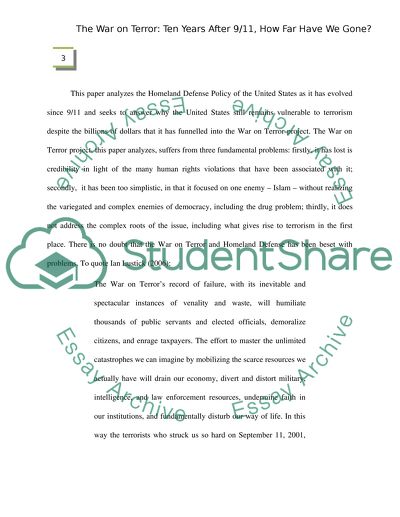Cite this document
(“The War on Terror: Ten Years After 9/11, How Far Have We Gone Research Paper”, n.d.)
Retrieved from https://studentshare.org/history/1394646-the-war-on-terror-ten-years-after-911-how-far-have-we-gone
Retrieved from https://studentshare.org/history/1394646-the-war-on-terror-ten-years-after-911-how-far-have-we-gone
(The War on Terror: Ten Years After 9/11, How Far Have We Gone Research Paper)
https://studentshare.org/history/1394646-the-war-on-terror-ten-years-after-911-how-far-have-we-gone.
https://studentshare.org/history/1394646-the-war-on-terror-ten-years-after-911-how-far-have-we-gone.
“The War on Terror: Ten Years After 9/11, How Far Have We Gone Research Paper”, n.d. https://studentshare.org/history/1394646-the-war-on-terror-ten-years-after-911-how-far-have-we-gone.


